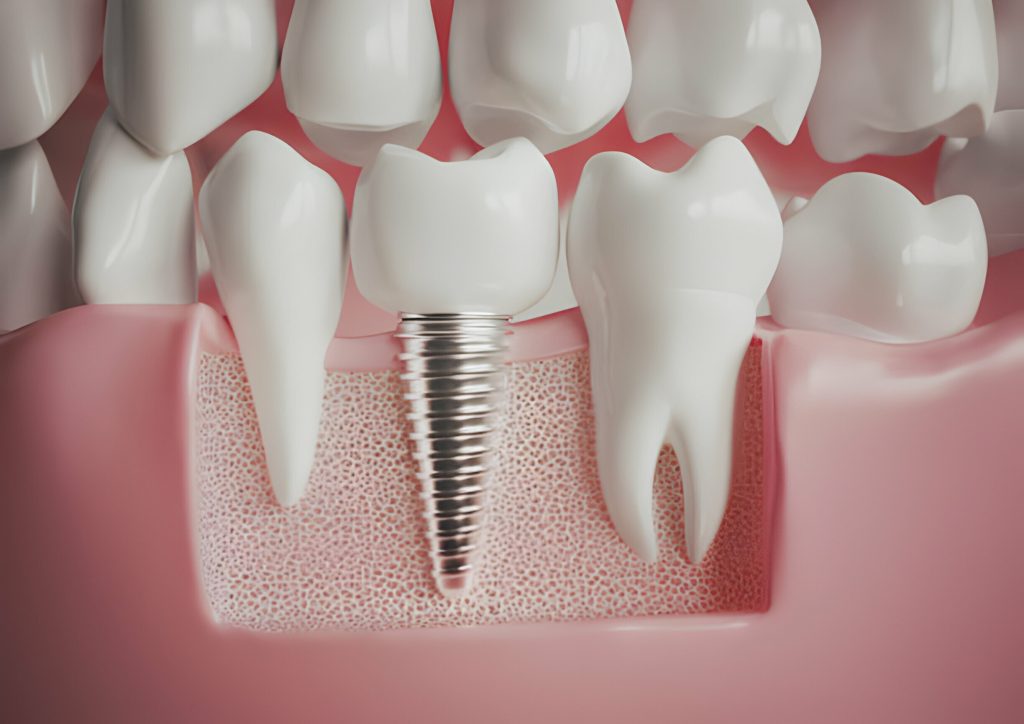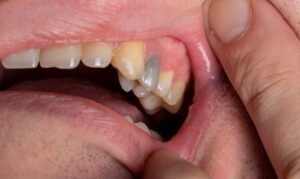Dental bridges and implants are both popular solutions for restoring missing teeth. They ensure a confident smile. However, the question often arises: Can a dental bridge be attached to an implant? This article will explore the possibilities and limitations of combining these two dental restoration methods. We’ll explore the intricacies of dental bridges. We’ll delve into the world of dental implants. We’ll discuss the factors that influence whether these two can work harmoniously together. By the end of this article, you’ll have a clear understanding of the considerations involved in making the right choice for your oral health.
Understanding Dental Bridges
A Dental bridge is a fixed appliance designed to replace missing teeth. It consists of artificial teeth (pontics) that bridge the gap created by one or more missing teeth. Dental bridges are secured by abutment teeth on either side of the gap. These abutment teeth provide stability and support to the bridge, ensuring it remains firmly in place.
The Role of Dental Implants.
Dental implants are titanium posts. They are surgically placed into the jawbone to serve as artificial tooth roots. They offer a durable and long-lasting solution for replacing missing teeth. Implants can support various dental restorations. These include crowns, bridges, and dentures. They provide a sturdy foundation for a natural-looking smile.
Can a Dental Bridge and Implant Coexist?
Now, let’s address the primary question: Can a dental bridge be attached to an implant? The answer lies in the unique characteristics of each dental restoration method.
Factors to Consider.
Several crucial factors determine whether combining a dental bridge with an implant is a viable option.
- Bone Health: The condition of your jawbone plays a significant role. Dental implants require a sturdy bone structure to support them adequately. If the jawbone is compromised due to bone loss or gum disease, additional procedures, such as bone grafts, may be necessary.
- The dental bridge’s design also influences its compatibility with an implant. Traditional bridges may not be suitable. However, an implant-supported bridge specifically designed for this purpose may work.
- Implant Placement: The position and alignment of the dental implant matter. Proper placement ensures stability and even distribution of biting forces.
- Consider the health of the neighboring teeth. Also, consider the implant’s position relative to these teeth.
The Implant-Supported
Bridge is a solution for individuals with missing teeth. They desire the stability of implants and the benefits of a dental bridge. An implant-supported bridge is designed to combine the strength of dental implants with the functionality of a bridge. This type of bridge utilizes implants as anchors. It distributes the bite force evenly and ensures a reliable and secure restoration.
Also Read: Are You Awake During Dental Implants?
The Procedure
The process of attaching a dental bridge to an implant involves several steps:
- Implant Placement: The dental implant(s) are surgically positioned in the jawbone.
- Healing Period: A healing period allows the implant to fuse with the bone.
- Abutment Placement: Abutments are attached to the implants.
- Bridge Fabrication: A custom bridge is crafted to fit the gap and attach to the abutments.
- Bridge Placement:final bridge is securely attached to the abutments. This completes the restoration.
Advantages of an Implant-Supported Bridge
- Enhanced Stability: Implant-supported bridges provide excellent stability and prevent shifting or movement.
- Improved Chewing and Speech: They restore proper biting function and speech clarity.
- Aesthetically Pleasing: These bridges offer a natural appearance, enhancing your smile’s beauty.
Conclusion.
The combination of a dental bridge and implant is indeed possible. However, it requires careful consideration of various factors. Bone health, bridge design, implant placement, and overall dental health are pivotal factors. They determine the success of this approach. If you’re considering this option, it’s essential to consult with a qualified dentist or oral surgeon. They can assess your unique circumstances and recommend the most suitable solution for your oral health needs. To make an informed decision about restoring your smile, you need to understand the intricate differences between dental bridges and implants. It also ensures long-term dental health. Whether you choose a traditional bridge or an implant-supported bridge, the goal is to regain your confidence. You want to enjoy the benefits of a complete, functional smile. For expert guidance tailored to your needs, contact GK Dental Implants and Cosmetic Clinic today!
Frequently Asked Questions (FAQs)
Can I get an implant-supported bridge if I have gum disease?
Answer: Gum disease must be treated before considering implants. Healthy gums are essential for successful implant placement.
Are implant-supported bridges removable like dentures?
Answer: No, implant-supported bridges are fixed in place and not removable. They provide a stable and permanent solution.
Also read: What’s the Difference Between Nhs and Private Dentist?
Can I eat any foods with an implant-supported bridge? Answer: Yes, you can enjoy a normal diet with implant-supported bridges, as they offer excellent chewing ability.
Do implant-supported bridges require special maintenance?
Answer: Regular oral hygiene practices, like brushing and flossing, are sufficient for maintenance. Dental check-ups are crucial too.
What’s the lifespan of an implant-supported bridge?
Implant-supported bridges can last 15-20 years or longer with proper care. They are a durable investment in your dental health.
Also read: What Happens If I Can’t Find an NHS Dentist?







